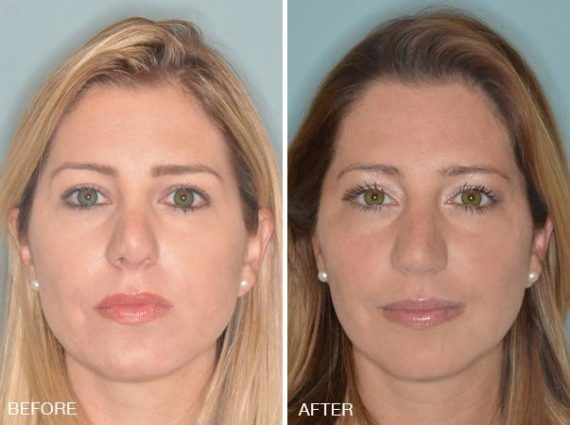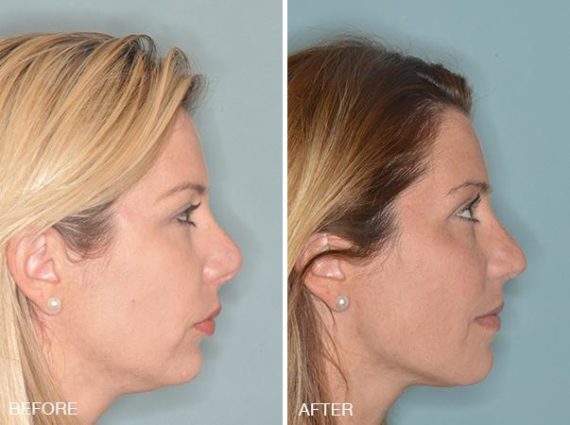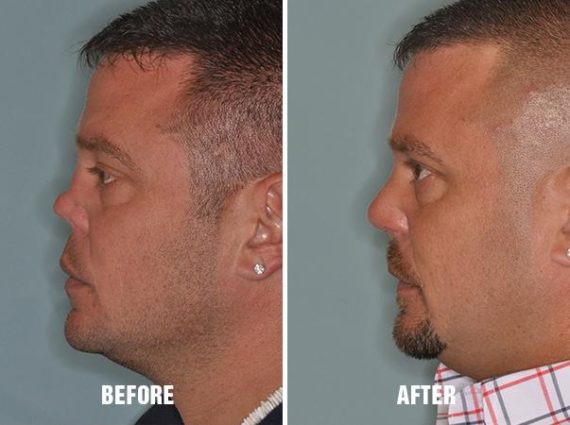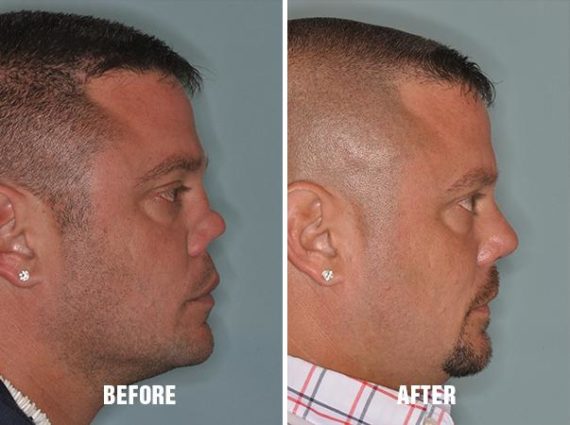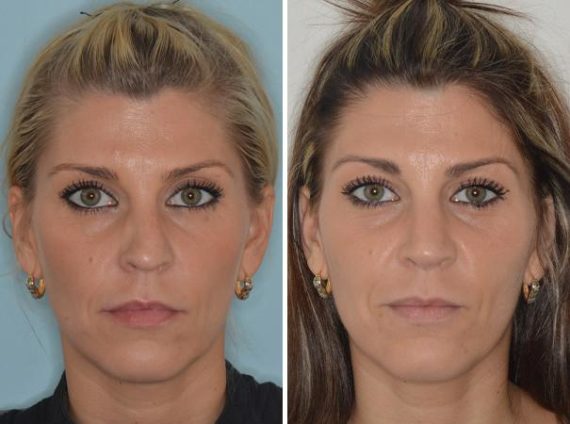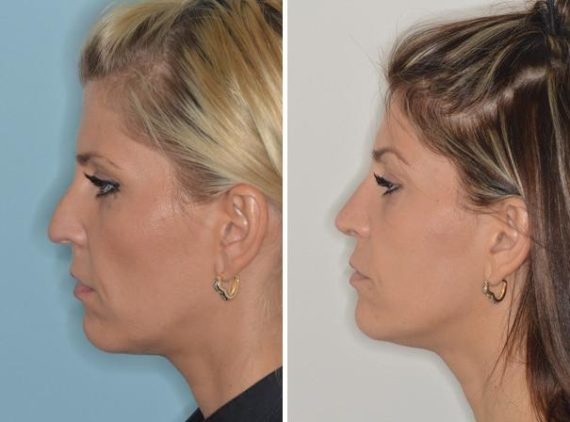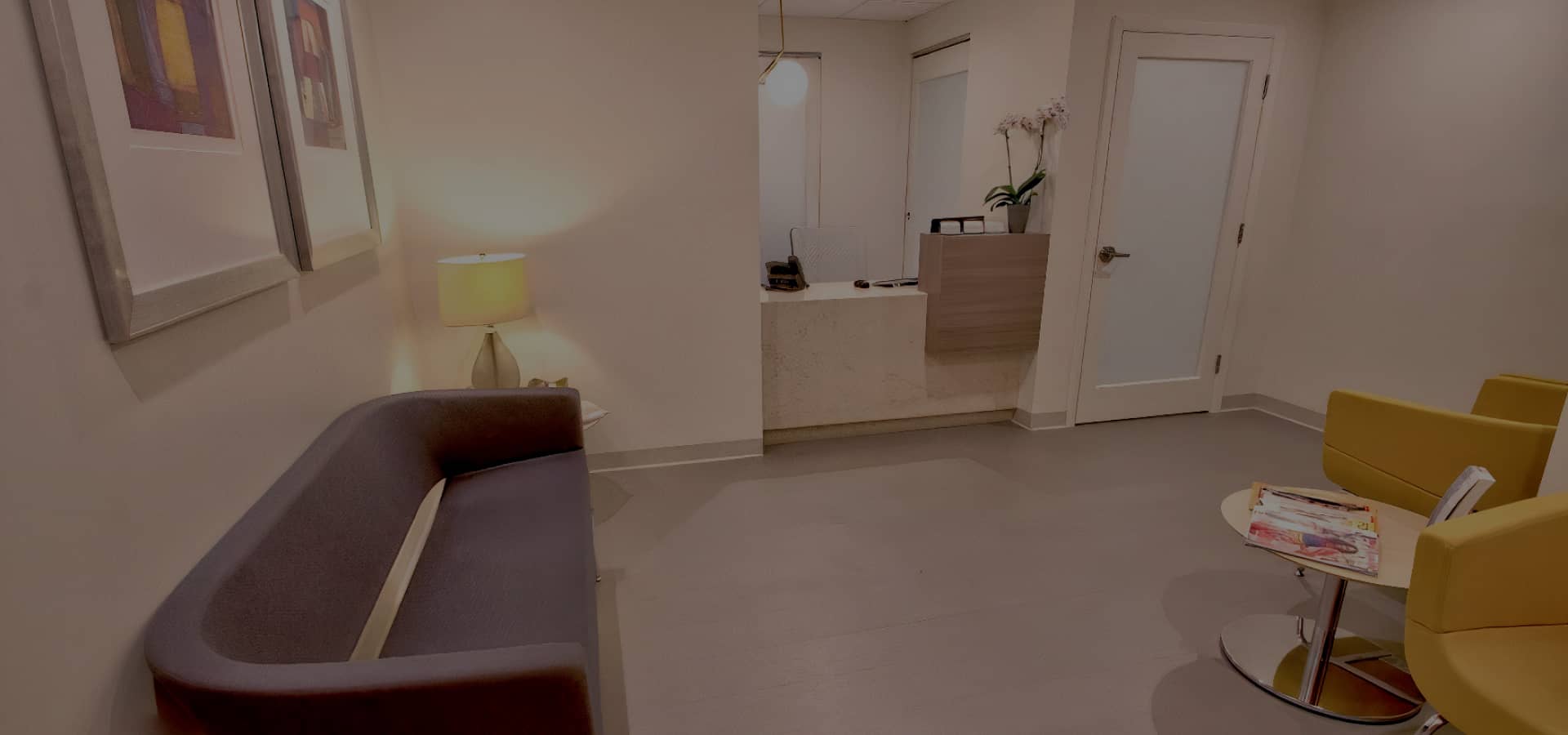Revision rhinoplasty is a popular secondary surgical procedure, specifically designed to correct issues that appear after a patient’s previous rhinoplasty surgery. One of the most common concerns following a primary rhinoplasty is the development of excess scar tissue. This article will discuss scar tissue formation and how revision rhinoplasty can help manage it.
Why Choose Dr. Anthony Bared
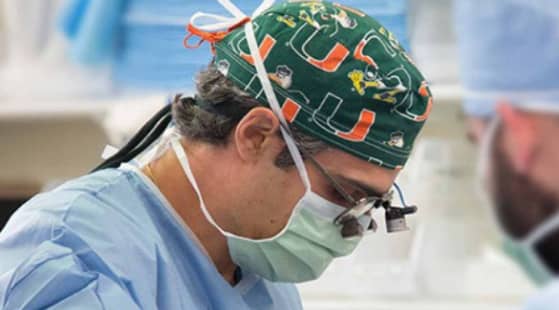
- Dr. Bared’s training was first in Otolaryngology at the University of Miami, followed by the awarding of a highly competitive fellowship by the American Academy of Facial Plastic and Reconstructive Surgery at the University of Illinois-Chicago.
- He is Double Board Certified by the American Board of Facial Plastic and Reconstructive Surgery and the American Board of Otolaryngology.
- Dr. Bared has numerous publications and has lectured at various nationwide scientific meetings.
- He also serves as a clinical voluntary Assistant Professor at the Florida International University, Herbert Wertheim College of Medicine.
- Dr. Bared is a recognized provider of the Foundation Aesthetic Hair Restoration Method. He uses his surgical skills and artistic instincts to offer advanced techniques that ensure natural and transformative results in beard and hair transplants.
What is Scar Tissue?
Scar tissue forms when fibroblast cells produce collagen to repair damaged tissue. It is the body’s natural response to an injury or incision. While some degree of scar tissue formation is expected after any surgical procedure, an abundance and visible scar tissue can lead to both aesthetic and functional issues.
Why is Scar Tissue a Concern?
Excessive scar tissue can cause several problems after a rhinoplasty procedure. Aesthetically, it may lead to an irregular or unnatural nasal shape. Functionally, it can cause breathing issues due to the obstruction of the nasal airway. In addition, excess scar tissue can make revision rhinoplasty Miami a more complicated procedure, as it is thick and nonelastic, making it difficult to cut into and reshape the nose.
Potential Causes of Scar Tissue Formation
Several factors can contribute to the development of excess scar tissue after a rhinoplasty procedure. Some of these factors include:
Age at Time of Surgery
One significant factor that contributes to the formation of scar tissue is the patient’s age at the time of the procedure. Younger patients often have more robust healing capabilities, which can sometimes lead to the development of more scar tissue than desired. While this enhanced healing ability is generally advantageous, it can become an issue when it causes additional scarring. Revision rhinoplasty can help manage this, ensuring a more aesthetically pleasing and functional result for younger patients.
Genetics and Skin Type
Genetics and skin type are also crucial factors in the development of scar tissue. Individuals with thicker or less elastic skin may be more susceptible to scar tissue formation due to their skin’s natural properties. In these cases, revision rhinoplasty can help address the excess scar tissue, ensuring a smoother, more refined outcome that better aligns with the patient’s desired appearance.
Blood Pressure & Blood Vessel Health at Time of Surgery
The patient’s blood pressure and blood vessel health at the time of surgery can significantly impact the development of scar tissue. High blood pressure or poor blood vessel health can increase the risk of scar tissue development, leading to a less satisfactory result. By addressing these underlying health issues and performing revision rhinoplasty, surgeons can manage the scar tissue and provide a more desirable outcome for the patient.
Smoking Before or After the Procedure
Smoking can have a detrimental impact on the healing process following rhinoplasty. The chemicals in cigarettes can obstruct blood supply, reducing blood flow to the surgical site and leading to poor healing and increased scarring. Patients who smoke before or after their procedure may require revision rhinoplasty Miami to address the excess scar tissue and achieve a more satisfactory result. Quitting smoking before surgery and throughout the recovery process can significantly reduce the risk of excessive scarring.
Complications During or After the Primary Rhinoplasty
Complications during or after the primary rhinoplasty, such as infection or hematoma, can increase the risk of excessive scar tissue formation. These potential issues can interfere with the healing process, leading to the development of more scar tissue than expected. Revision rhinoplasty can help manage this scar tissue, ensuring a more successful outcome for patients who experience complications during their initial procedure such as breathing difficulties.
Post-Operative Care
Following post-operative recovery instructions is essential for minimizing the risk of scar tissue development. Revision rhinoplasty patients should avoid sun exposure, apply cold compresses as directed, and follow their surgeon’s advice regarding activity restrictions and wound care. By adhering to these guidelines, patients can help reduce the risk of excessive scar tissue formation and discomfort after rhinoplasty. However, if scar tissue does develop, revision rhinoplasty can help manage the issue and achieve a more satisfactory result.
By understanding the factors that contribute to scar tissue formation and taking steps to mitigate these risks, patients can increase their chances of achieving a successful surgical outcome.

Understanding Options for Scar Tissue Management
In revision rhinoplasty, managing scar tissue effectively is crucial for both aesthetic and functional outcomes. Patients have options ranging from surgical revision, where the surgeon carefully removes and reshapes the scar tissue, to non-surgical approaches like cortisone steroid injections, which can reduce the appearance of scar tissue without additional surgery. It’s essential to discuss these options with your surgeon to determine the best course of action based on your specific needs and the complexity of your scar tissue.
How Revision Rhinoplasty Can Help
If excess scarring is causing aesthetic or functional issues after a primary rhinoplasty, revision rhinoplasty may be necessary. Miami Revision rhinoplasty surgery involves the reopening of the nose, incisions throughout the scar tissue, and the re-sculpting of the nose without removing too much tissue or cartilage. This can help restore the nasal shape and improve breathing function with a natural appearance.

Diagnosing Excess Scar Tissue
An experienced revision rhinoplasty surgeon will carefully assess the candidates for revision rhinoplasty nose and determine if excess scar tissue from the original surgery is the cause of the issues. They may also use imaging techniques, such as computerized tomography (CT), to visualize the internal structure of the nose and identify the presence of scar tissue.
Addressing Common Patient Concerns
Many patients considering revision rhinoplasty have concerns about the recovery process, the likelihood of achieving their desired aesthetic goals, and the risks involved in undergoing a secondary surgery. It’s important to have a clear understanding of the recovery timeline, what to expect in terms of results, and how to mitigate potential risks. A thorough consultation with your surgeon will help set realistic expectations and prepare you for the journey ahead.
Preparing for Revision Rhinoplasty
Patients should wait at least one year after their initial rhinoplasty procedure before undergoing revision rhinoplasty Miami Beach. This allows time for the nose to heal and any swelling to subside. In the meantime, patients can discuss non-surgical treatment options with their surgeon, such as steroid injections or massage therapy, to help manage scar tissue and improve nasal structure and function.
Recovery Process after Revision Rhinoplasty
The recovery process after a revision rhinoplasty procedure can be more complex and take longer than the initial rhinoplasty surgery. It is crucial to follow your surgeon’s detailed post-operative instructions to ensure proper healing and minimize the risk of additional scar tissue formation. Some general guidelines for recovery may include:
- Keeping the head elevated to reduce post-operative nasal swelling
- Applying cold compresses to help manage pain and inflammation
- Taking prescribed medications to control pain and prevent infection
- Avoiding strenuous activities and heavy lifting for several weeks
- Refraining from smoking and alcohol consumption during the healing process
- Following a healthy diet and staying well-hydrated to promote healing
It is essential to be patient during the process, as recovery time may take anywhere from six months to two years for the final results to become apparent. Regular follow-up appointments with your surgeon will help monitor your progress and address any concerns that may arise.
Revision Rhinoplasty Before & After Photos
Each patient is unique and individual results may vary*.
What Foods Can Help Minimize Swelling and Promote Healing After Rhinoplasty Surgery?
After undergoing rhinoplasty surgery, incorporating specific foods into your diet can aid in minimizing swelling and promoting healing. Opt for pineapple, bromelain-rich fruit that possesses anti-inflammatory properties, reducing swelling. Leafy greens, such as spinach and kale, are packed with vitamins like A and C, crucial for collagen production and tissue repair. Lastly, include foods rich in omega-3 fatty acids, like salmon and walnuts, to promote healing and minimize inflammation. These eating tips for rhinoplasty surgery can help enhance your recovery process.
Choose the Right Revision Rhinoplasty Surgeon
Selecting an experienced and skilled revision rhinoplasty surgeon like Dr. Anthony Bared is crucial to achieving the best possible outcome. Here are some factors to consider when choosing a surgeon:
- Board certification: Ensure the surgeon is board-certified in facial plastic and revision surgery or a related field. This indicates they have undergone rigorous training, meet high standards of expertise, and use advanced techniques.
- Surgical experience: Look for a facial plastic surgeon who specializes in revision rhinoplasty and has a proven track record of successful nose job outcomes.
- Before and after photos: Review the surgeon’s portfolio of before and after photos to get a sense of their aesthetic style and the quality of their work.
- Communication: Choose a plastic surgeon who listens to your concerns, answers your questions, and communicates clearly about the risks and benefits of Miami rhinoplasty revision for the best cosmetic goals.
- Patient reviews: Read testimonials and reviews from previous patients to gain insight into the surgeon’s reputation and the quality of care provided.
By carefully considering these factors and conducting thorough research, you can find a revision rhinoplasty surgeon who is well-equipped to address your concerns and help you achieve your desired results. To d





